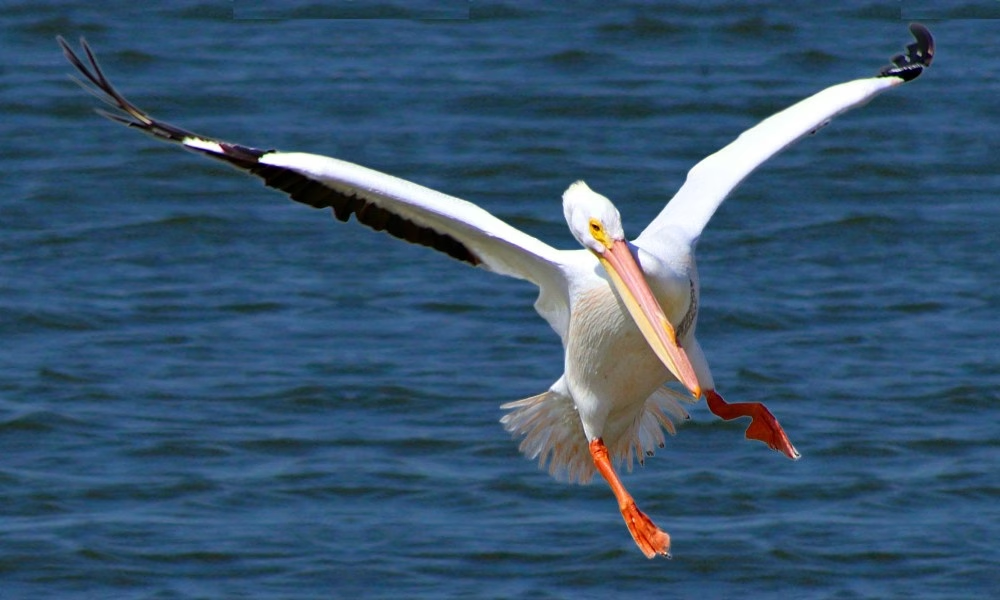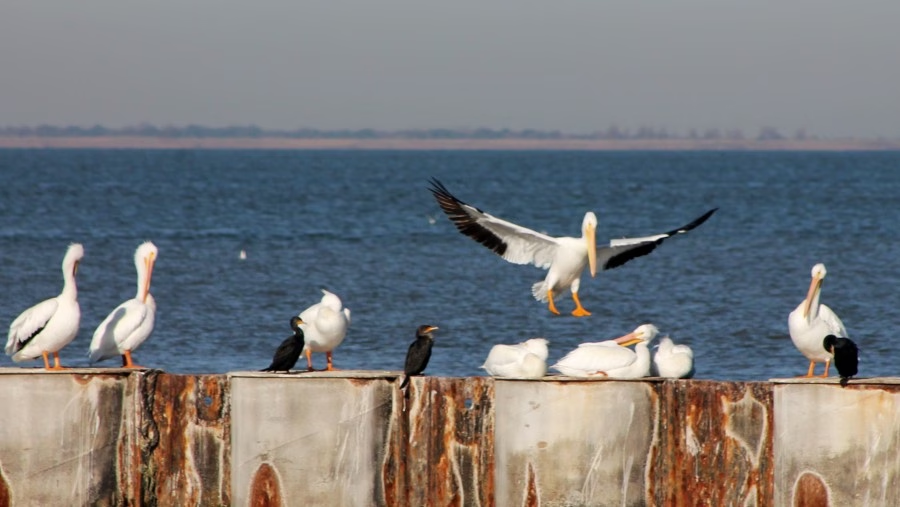
Every year, as the summer heat begins to soften and the light takes on that autumn glow, my wife starts watching the water. It’s not just the changing weather that signal a new season for her—it’s the return of the magnificent white pelicans. Her first sighting is always at the ferry landing. There, amidst the familiar bustle, they appear like quiet, stately visitors from afar. And that’s exactly what they are! These beautiful birds are migrants, traveling from their nesting grounds in the northern lakes and prairies to spend the milder winters along our coasts.
For those of us used to seeing our local brown pelicans cruising the waves all year, these white pelicans are a different sight. The first thing you’ll notice is their sheer size. You think brown pelicans are big! American White Pelicans are some of the largest birds in North America, with wingspans that can stretch to 9 feet from tip to tip. They are truly majestic in flight, soaring like feathered gliders.

But their differences aren’t just in color and size; they have entirely different approaches to dinner!
Our resident brown pelicans are the daring solo divers of the sea. You’ve seen them—they fly along, spot a fish from the air, and then tuck their wings into a spectacular, head-first plunge into the water. It’s a dramatic and skillful display of individual hunting.
The white pelicans, on the other hand, are the polite team players. They prefer to work together. You’ll often see a group of them swimming in a graceful line or a semicircle. They’ll dip their enormous bills in the water at the same time, calmly corralling fish into the shallows before scooping them up. It’s a quieter, more coordinated affair, and it’s fascinating to watch. Unlike the brown pelican, they never dive from the air; they’re all about surface-skimming teamwork.
So, the next time you’re near the ferry landing, keep an eye out. When you see those large, white birds with black-tipped wings, soaring gracefully or fishing in a synchronized group, you’ll know the season has truly turned. Take a moment to appreciate these gentle giants—they’re a beautiful, temporary part of our landscape, and for my wife, and perhaps now for you, a cherished herald of autumn’s arrival.




